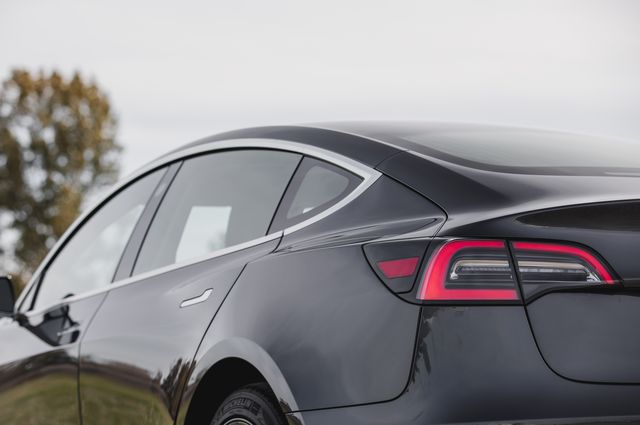
Michael SimariCar and Driver
- Owning a Tesla Model 3 (or any electric car) can substantially reduce fuel costs compared to a gas-powered car, but only when it's charged at home.
- Tesla's Superchargers are fast but pricey, averaging the equivalent of nearly $9 per gallon.
- Based on the national average electricity cost and average cost of premium unleaded gas, we've spent roughly $1200 less powering our long-term Model 3 compared to our long-term BMW M340i test car.
We've had a 2019 Tesla Model 3 Long Range in our long-term fleet for a little over a year to get the complete Tesla owner experience. A few things have been apparent with our Midnight Silver Metallic Model 3, including that it's constantly changing with over-the-air updates and entertaining with zaniness such as farting on command, but as we crest the 20,000-mile mark, we've also now crunched the numbers on the cost of operating an electric car to see just how much cheaper it is.
Saving money by driving an EV really hinges on having a place to charge at home or at the office. Assuming the national residential average electricity cost of 13.6 cents per kilowatt-hour and our car's actual 84 MPGe efficiency, our Model 3 has cost us 5.5 cents per mile during its first 24,000 miles, or just over $1300 total. If we charged solely at Superchargers, however, which, at 26 cents/kWh costs the equivalent of $8.76 per gallon, that average cost jumps to 10.4 cents per mile and totals to just over $2500. That nearly matches our 10.7-cent average in our long-term BMW M340i test car, which is powered by a 382-hp turbocharged inline-six and has averaged 26 mpg during our test.
We admit that we end up Supercharging quite often, as our Model 3, which is equipped with a 75.0-kWh battery pack, is constantly rotating through editors on our staff, many of whom don't have charging stations installed at their homes. So we find ourselves plugging in at Tesla's Supercharger stations, which can now support charge rates as high as 250 kW, frequently—especially when we take the Model 3 on longer trips. Overall, our charging at the office and at home has been two thirds of our total energy use, with one third happening at Superchargers. That works out to a cost of 7 cents per mile, or about $1700 total.
So if you're buying an electric car to save on fuel costs, make sure you plug in at home. Tesla has a few options: A mobile connector, which includes an adapter for standard 120-volt household outlets, is included with every Tesla, and it can charge the car from different wall outlets at medium to low speeds. It charges the Model 3 and Model S at a rate of around three miles of range per hour, which means a full charge takes many days to complete. A wall connector, which is what the majority of Tesla owners use to juice up, is available for $500. The cost for installation of a wall connector varies, and depends highly on whether or not the service at your house has enough bandwidth to accommodate charging without a major upgrade; Tesla has a helpful list of recommended electricians on its website. The Model 3 can charge at up to 11 kW (or 44 miles of rated range per hour) when connected to the wall connector.
States such as California and Massachusetts have said that they will ban the sale of new gas-powered cars by 2035 in favor of electric vehicles. So, along with being more eco-friendly, these cars will be cheaper to operate, too. But first you need to spend some of those future savings by getting charging equipment installed at home.
This content is imported from {embed-name}. You may be able to find the same content in another format, or you may be able to find more information, at their web site.
This content is created and maintained by a third party, and imported onto this page to help users provide their email addresses. You may be able to find more information about this and similar content at piano.io
Bagikan Berita Ini
















0 Response to "Our Tesla Model 3 Proves EVs Are Cheaper When Charged at Home - Car and Driver"
Post a Comment